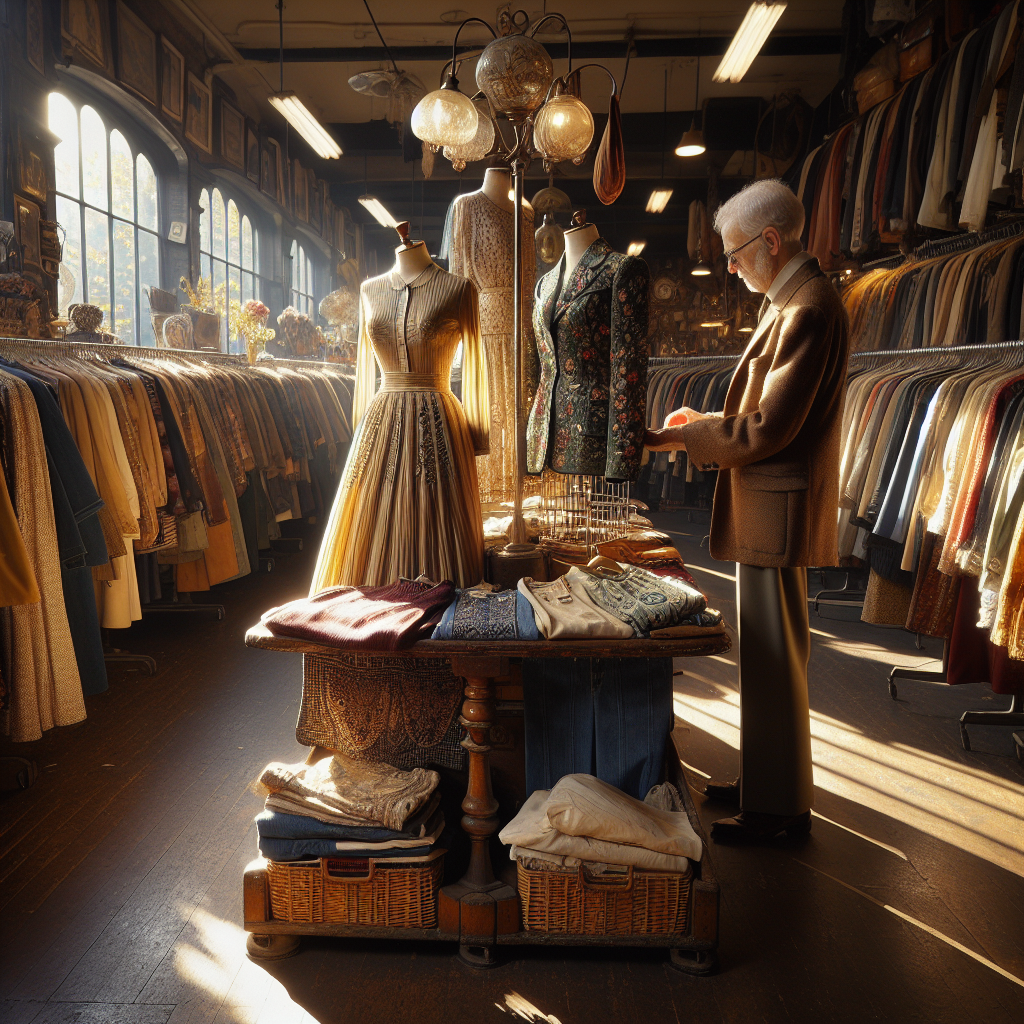
The Ultimate Guide to Spotting Vintage Treasures at Thrift Stores
Ever walked into a thrift store and felt overwhelmed by racks upon racks of clothing? You're not alone. But hidden among those endless hangers could be authentic vintage pieces worth far more than their price tags suggest. As someone who's spent countless hours treasure hunting in thrift stores, I'm excited to share my tried-and-true tips for identifying genuine vintage clothing.
Look at the Label First
The label is your first clue in determining a garment's age. Vintage clothing labels often look notably different from modern ones. Look for labels with ILGWU (International Ladies' Garment Workers' Union) tags, which were common from the 1955-1995 period. Union labels with a scalloped edge typically indicate 1950s pieces, while those with blue-and-white tags are usually from the 1970s-80s. Also, keep an eye out for "Made in USA" tags – these are increasingly rare in modern clothing.
Construction Details Matter
Vintage garments often feature construction details that aren't common today. Metal zippers (especially those marked "Talon") usually indicate pre-1970s clothing. Hand-stitched hems, pinked seams, and bound buttonholes are also telltale signs of vintage pieces. Look for finished seams that are obviously done with care – many vintage garments were built to last.
Fabric Quality and Type
The feel of fabric can tell you a lot about its age. Vintage polyester has a distinct feel different from modern synthetics. Natural fibers like wool and cotton were more commonly used in older clothing, and their quality was often superior. Look for unusual textile patterns and prints that aren't currently in style – they might be authentic vintage designs.
Size Matters
Vintage sizing runs significantly smaller than modern sizing. A vintage size 12 might be equivalent to today's size 6 or 8. Don't let the number on the tag discourage you – always try pieces on or measure them against your own well-fitting clothes.
Common Vintage Finds by Decade
- 1950s: Full skirts, peter pan collars, high waisted pieces
- 1960s: Shift dresses, bold geometric prints, mini skirts
- 1970s: Bell bottoms, peasant blouses, earth tones
- 1980s: Power shoulders, bold colors, oversized silhouettes
- 1990s: Slip dresses, grunge flannel, mom jeans
Watch Out for Reproductions
Modern brands often create vintage-inspired clothing that can fool even experienced thrifters. Check for care labels with modern washing symbols (introduced in the late 1990s), and be wary of "vintage style" pieces from contemporary fast-fashion brands.
Price Considerations
While thrift stores are catching on to vintage clothing's value, many still price items based on standard categories rather than age or collectibility. This means you can often find genuine vintage pieces at regular thrift store prices – if you know what to look for.
Care and Preservation
Once you've found your vintage treasure, proper care is essential. Many vintage garments require hand washing or dry cleaning. Always check for any damage or weak spots before purchasing, and be prepared to make minor repairs to preserve your finds.
Ready to start your vintage hunting adventure? Remember these key points: check the label, examine construction details, feel the fabric, and don't forget to cross-reference your finds with online vintage clothing resources. For more detailed guides on thrifting and vintage clothing authentication, visit lazylister.net, where we regularly share expert tips and tricks for finding the best secondhand treasures.
Happy hunting, and may your next thrift store visit yield some amazing vintage finds!
Comments
Post a Comment